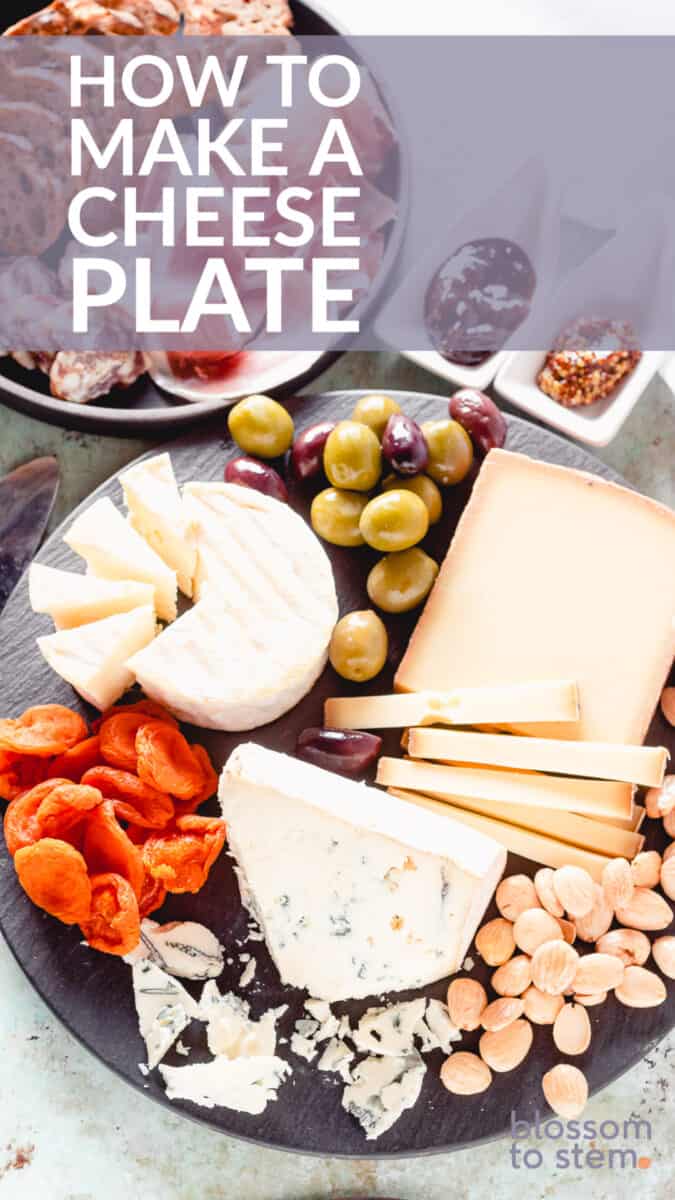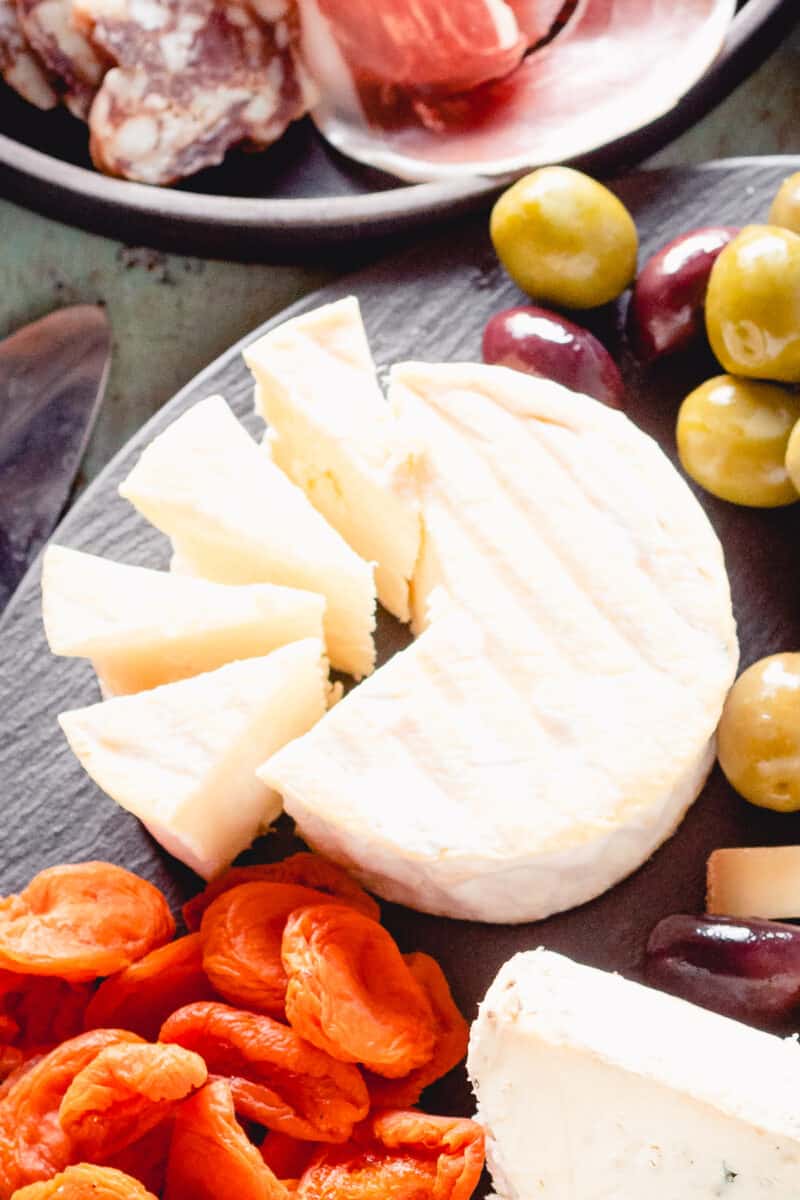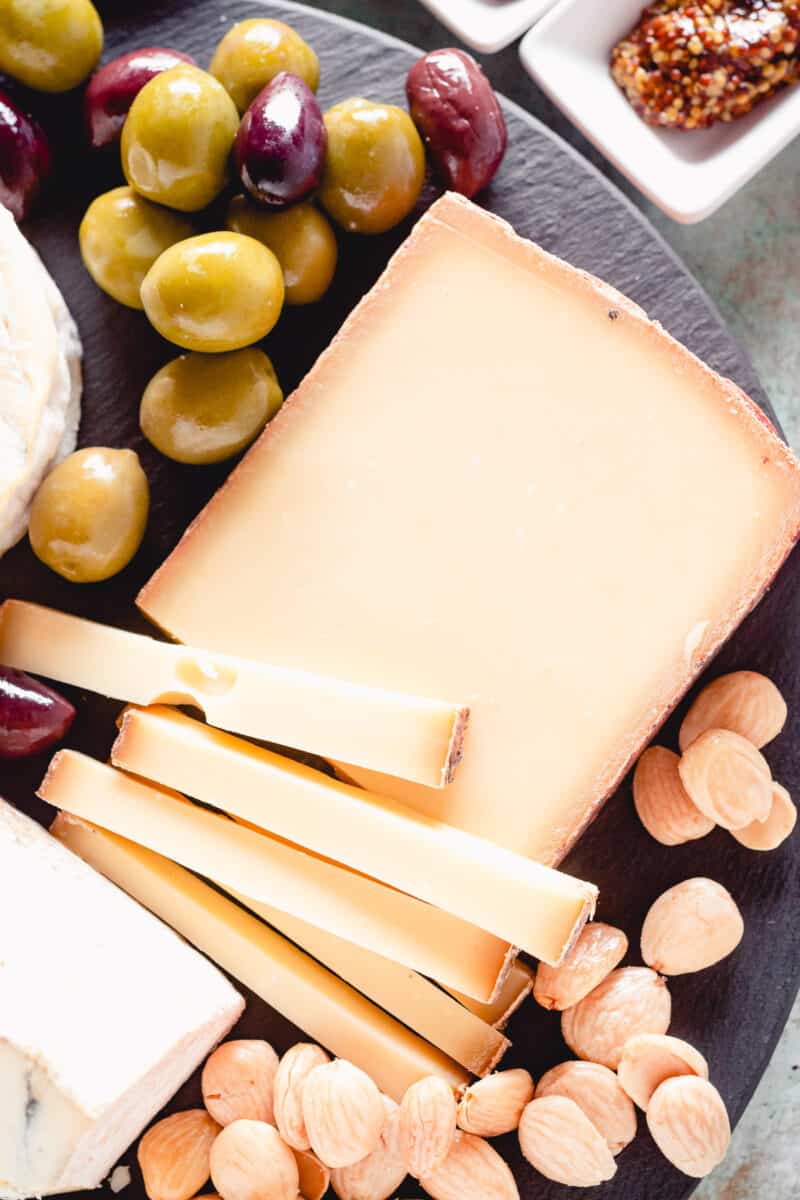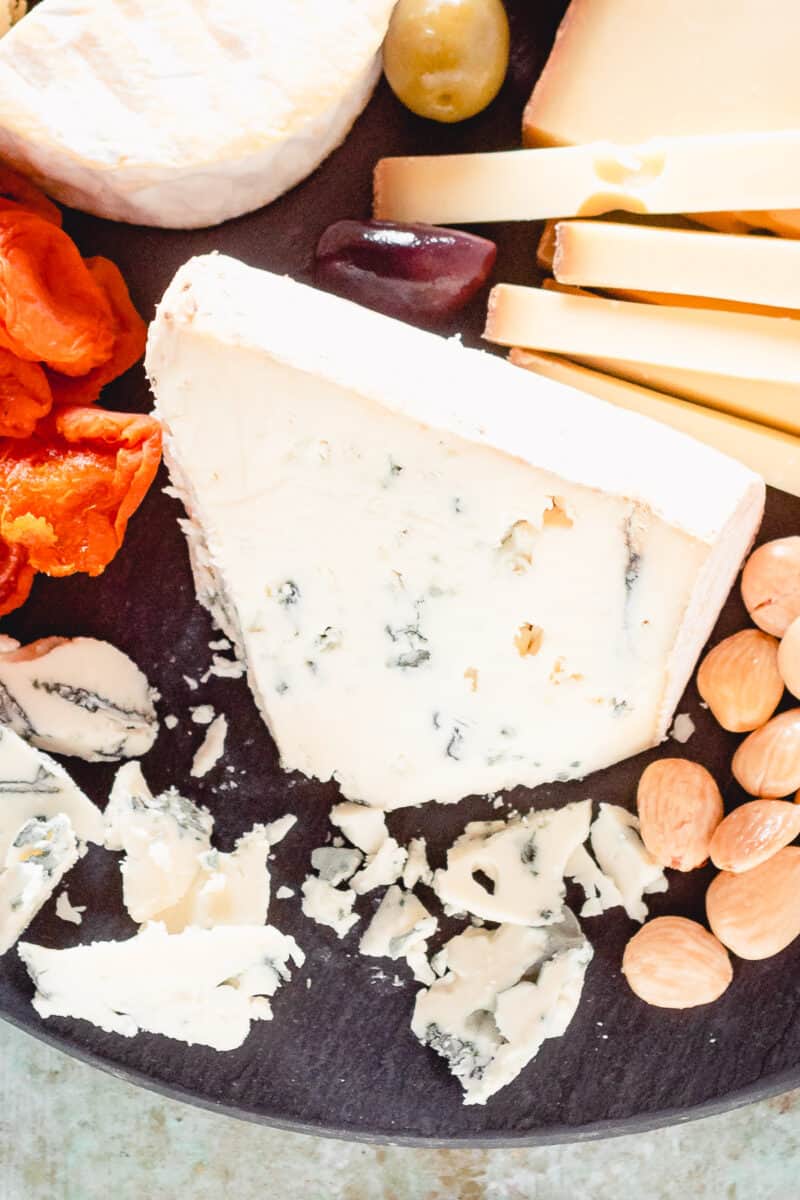I may earn from purchases through links in this post.
So you want to put together a cheese board?
Great!
It’s the kind of cooking that’s really more about shopping than anything else, which means that you don’t need to have particular skill in the kitchen to serve at your next gathering.
But shopping for cheese can be intimidating. Especially if you, like most people, don’t have the vocabulary of a cheesemonger.
But it doesn’t have to be!
Your best bet is to go to a place with a cheese counter where you can try the cheese before you you buy it and have it cut to order.
If you are lucky enough to live near a good cheese shop or a grocery store with a good cheese counter, the person behind the counter should be able to steer you toward good options. (Don’t fear asking dumb questions; they’ve heard it all before!)
Tell them what you like and what you don’t like (goat cheese? blue? stinky?), how many people you’re feeding, and what kind of gathering it’s going to be and most cheesemongers and well-trained staff will get you sorted right proper.
But, alas, I know not everyone has that luxury. Lots of us are stuck with whatever is in the “fancy” section of the basic chain supermarket and whatever advice we just googled (ahem).
But regardless of where you’re shopping, you’ll be glad to have a game plan before you head to the store
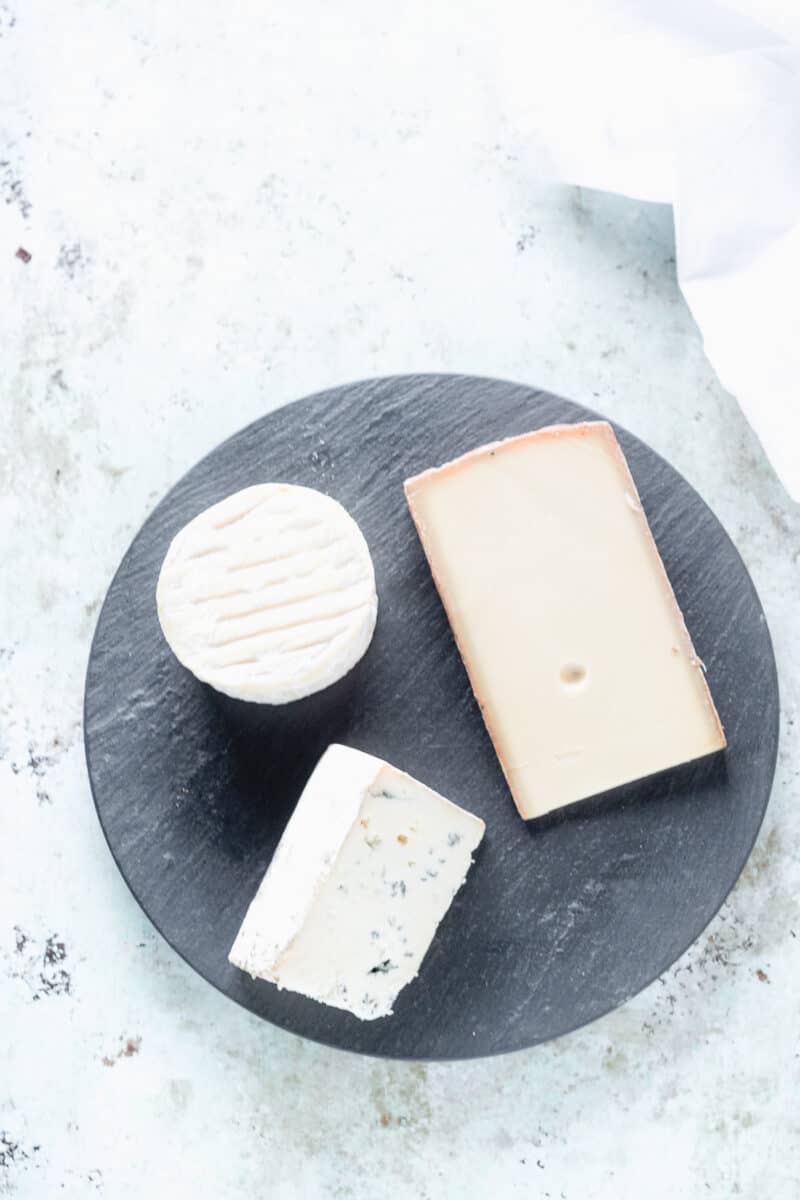
So, what are some helpful guidelines for building a cheese board?
- How much cheese should I get? Aim for 3-4 ounces of cheese per person. Less if you’re having a big meal along with it.
- How many kinds of cheese should I serve? The French believe in serving cheese in odd numbers, and 3 is a good place to start and a fine default number. You never really need more than 5. If you’re serving a crowd and want to go crazy you can do as many as 7, but that’s pushing it and asking for palate fatigue.
- What kinds of cheese should I buy? Look to put together a variety of textures and flavors. A hard, aged cheese like an aged cheddar like Cabot Clothbound or an aged gouda or Parmigiano Reggiano; a soft, bloomy-rind cheese like Delice de Bourgogne, Mt. Tam, St. Andre, Camembert, or brie; a semi-hard cheese like a youngish Manchego or an Alpine (a.k.a. Swiss) cheese like Emmental or Comte; a blue cheese like Bayley Hazen Blue, Rogue Rive Blue, Gorgonzola, Stilton, or Roquefort. You can add more range by including cheeses made from a variety of milks, the most common being cow’s, goat’s, and sheep’s milk.
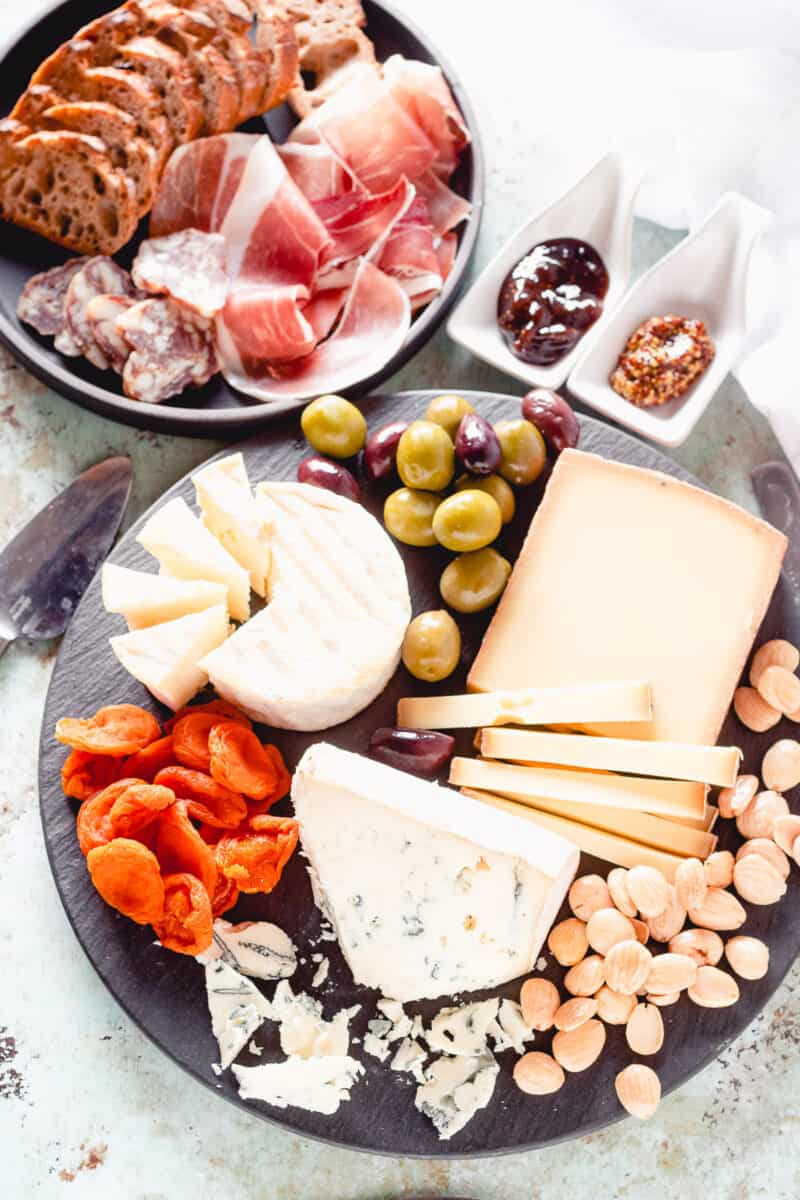
What accompaniments should you get?
Once you’ve chosen your cheeses, you’ll want to pick out a few things to go with them. There’s no need to go crazy here. Like with the cheese itself, you’re going to want a variety of textures and flavors, and it helps to choose accompaniments in a variety of colors for added visual interest.
You’ll want a few of the following:
- Bread and/or crackers. Thinly sliced baguette is always nice, and some crisp crackers work well as a base for cheese. They’re the backdrop for the cheese, so keep it simple without adding competing flavors here.
- Fruit. Dried fruit makes for a classic pairing with cheese. Dried apricots or cherries are nice and pretty much always available. Fresh grapes and fresh figs are also classic, and pomegranate seeds are also welcome (and cranberry lapsang poached apples are show-offy but delicious if you want to go the extra mile).
- Pickled things. Acid wakes up a palate dulled by all that wonderful fatty cheese. Cornichons are classic here, but pickled cauliflower or pickled okra or pickled beets or even pickled fruit go beautifully with most cheese.
- Nuts. Pretty much the best nuts to pair with cheese are Marcona Almonds, but you can futz around with walnuts or pistachios or pecans if you’d rather.
- Charcuterie. Totally optional depending on the crowd, but a cured ham like prosciutto or speck and a hard salami are nice to have.
- Spreads. Fruit compotes or jams like fig or membrillo are nice to have around. Honey is delightful with most cheese (and honey comb looks impressive). Grainy mustard is nice if you’re doing anything with cornichons or meats.
- Olives. Pretty self explanatory. Be sure to have a place for people to discard the pits.
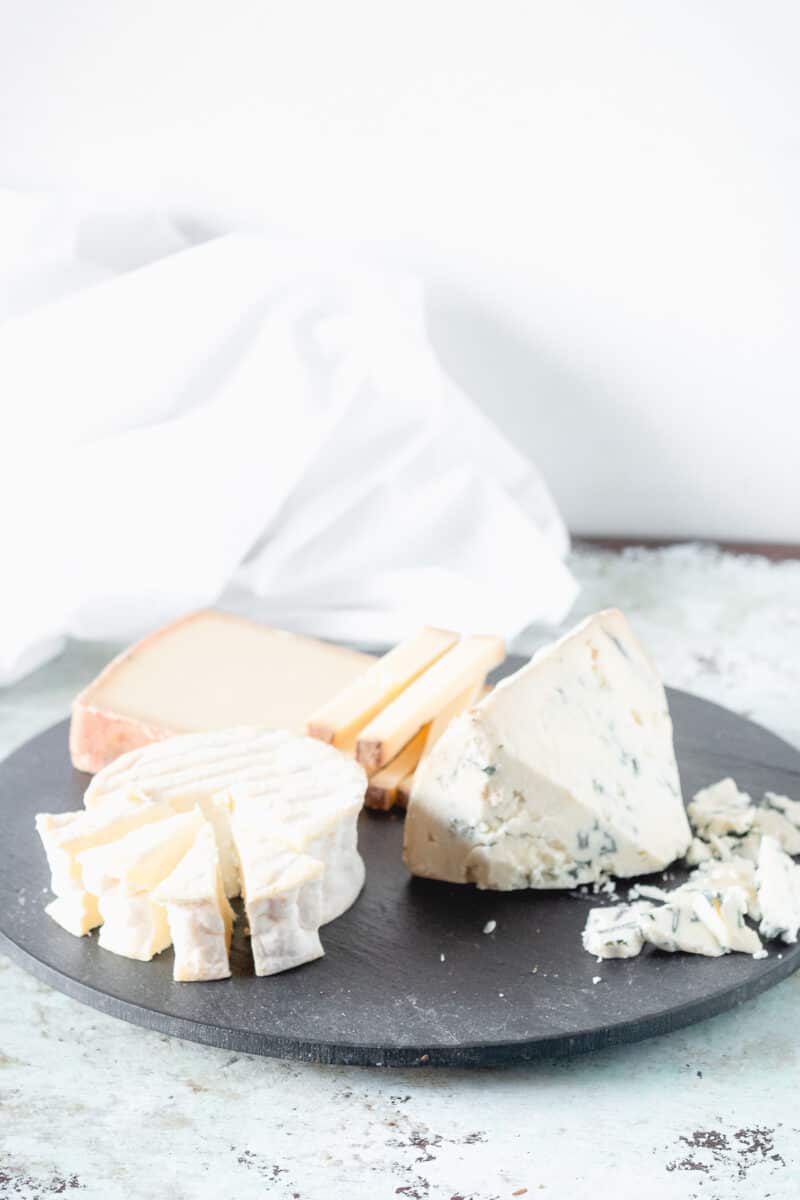
How should you serve the cheese?
Avoid common mistakes to get the most out of your cheese and keep things easy for your guests.
- Cheese tastes best at room temperature. In the U.S., we tend to store all cheese in the refrigerator, which is fine, but if you eat it cold, you’ll be missing out on the flavors and textures that make special cheeses taste so good. Take your cheese out of the fridge 1-2 hours before serving to let it come to the ideal temperature for serving.
- Let the cheese stand alone. That is, don’t drizzle honey or balsamic vinegar or compote over your cheese ahead of time. Let your guests taste the cheese all by itself and then mix and match each cheese with whatever accompaniments they choose.
- To cut or not to cut? Well, it depends. If it’s a small casual gathering of a few people who’ll be sitting around the cheese plate the whole time then you can leave your cheeses whole with appropriate knives handy, though I’d still recommend slicing a few pieces ahead of time so no one worries about cutting it wrong. For anything bigger or more formal, you’ll make life easier for your guests and keep your board looking prettier if you cut your cheeses ahead of time on a separate cutting board and transfer to your serving board. (Here’s a guide on how to cut different types of cheese.) Leave the rind on the cheese and let guests discard it on their plate if they’re not eating it.
- Have a different knife or spreader for each cheese. Avoid mixing the cheese flavors by using a different knife for each cheese (you don’t want everything on the plate to taste like blue cheese!). Serve soft cheeses with spreaders, hard cheeses with a spade that makes it easy to chunk. If you’ve cut everything ahead of time, forks or a cheese knife with a forked-tip for spearing chunks of cheese can be helpful to make serving easier.
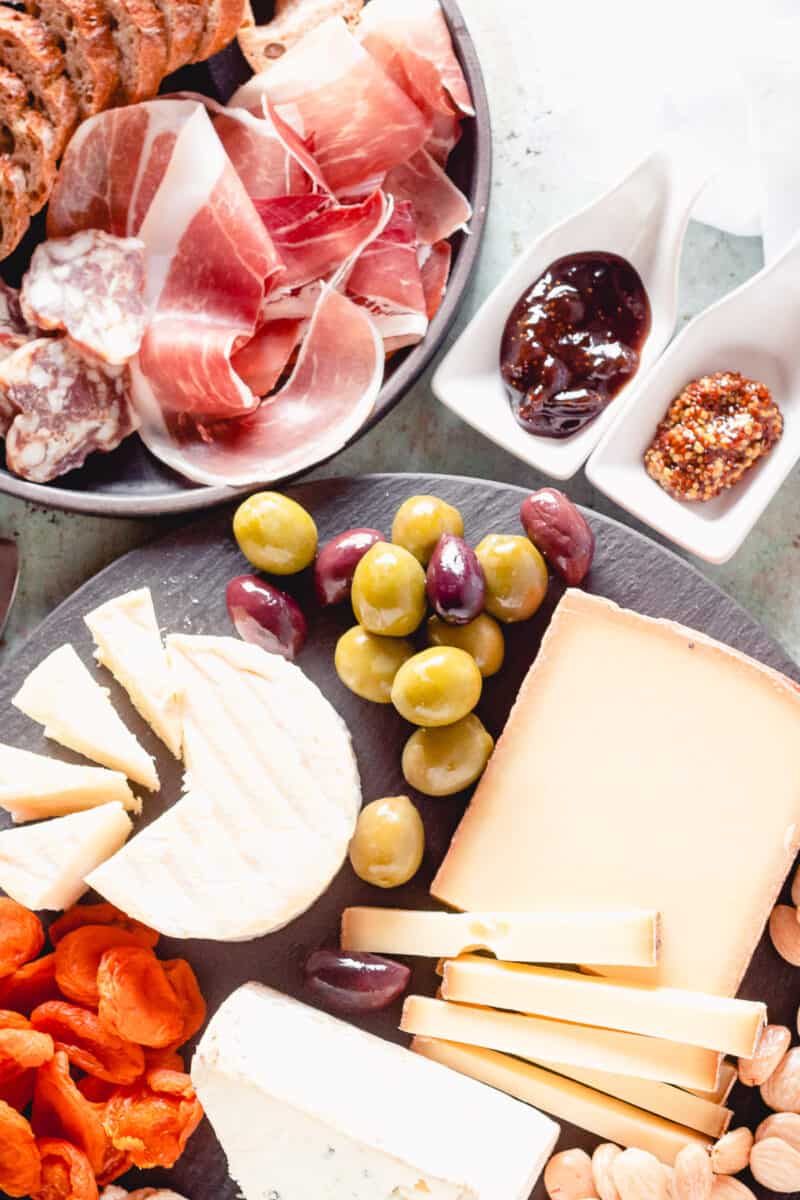
How should you store cheese?
- In paper! I know, I know. In the U.S. most cheese is sold wrapped in plastic, which can leave a lingering plastic flavor on the cheese. If your cheese is wrapped in plastic, you can unwrap it when you get home and rewrap it in cheese wrap or parchment paper or wax paper.
Enjoy your cheese!

